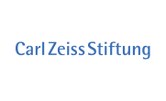Viola Priesemann, MPI for Dynamics and Self-Organization, Dept. of Nonlinear Dynamics and Network Dynamics, Göttingen | Assessing Network Dynamics under Subsampling
| When |
May 08, 2018
from 05:15 PM to 06:15 PM |
|---|---|
| Where | Lecture Hall, Bernstein Center Freiburg |
| Contact Name | Prof. Dr. Ulrich Egert |
| Add event to calendar |
|
Abstract
In most large systems, only a tiny fraction of all units can be sampled in parallel. For example, neural spike recordings typically sample about hundred neurons in parallel with millisecond precision - thus a tiny fraction of a brain area. This spatial subsampling can lead to a strong, systematic bias when inferring collective properties. The bias cannot be overcome by longer sampling or ensemble averaging. We developed solutions for the subsampling problem for two distinct problems, namely subsampling on a graph, and subsampling the spiking activity of a neural network.
Based on our subsampling-invariant estimator, we revisited the popular hypothesis that neural networks operate close to a 2nd order phase transition (criticality), to maximize their dynamic range and susceptibility. We found instead a "reverberating regime", consistently for rat, cat and monkey cortex. This regime may enable the brain to flexibly draw on the computational properties associated with criticality as well as asynchronous-irregular dynamics. Thereby it allows the brain to adapt its computational properties to task requirements.
Literature
- J. Wilting and V. Priesemann: Branching into the Unknown: Inferring collective dynamical states from subsampled systems. arxiv 2016. (Link)
- A. Levina and V. Priesemann: "Subsampling scaling", Nature Comm. 8, 2017 (Link)









